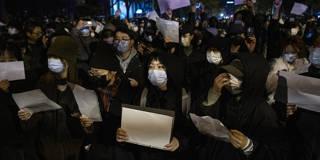In response to the COVID-19 pandemic, different countries adopted different strategies, depending on their respective cultural and historical traditions. While China's top-down authoritarian strategy initially seemed effective, the regime's zero-COVID policy ultimately proved to be fatally flawed.
BERLIN – In October, the Communist Party of China convened its 20th National Congress, primarily to confirm President Xi Jinping’s hold over the country’s leadership. Everything went according to his plan: the CPC’s top governing body, the Standing Committee, is now staffed only by his most devoted henchmen. With Xi having secured a third term as general secretary – and thus as president – one man now has absolute power in China for the first time since the days of Mao Zedong.

BERLIN – In October, the Communist Party of China convened its 20th National Congress, primarily to confirm President Xi Jinping’s hold over the country’s leadership. Everything went according to his plan: the CPC’s top governing body, the Standing Committee, is now staffed only by his most devoted henchmen. With Xi having secured a third term as general secretary – and thus as president – one man now has absolute power in China for the first time since the days of Mao Zedong.